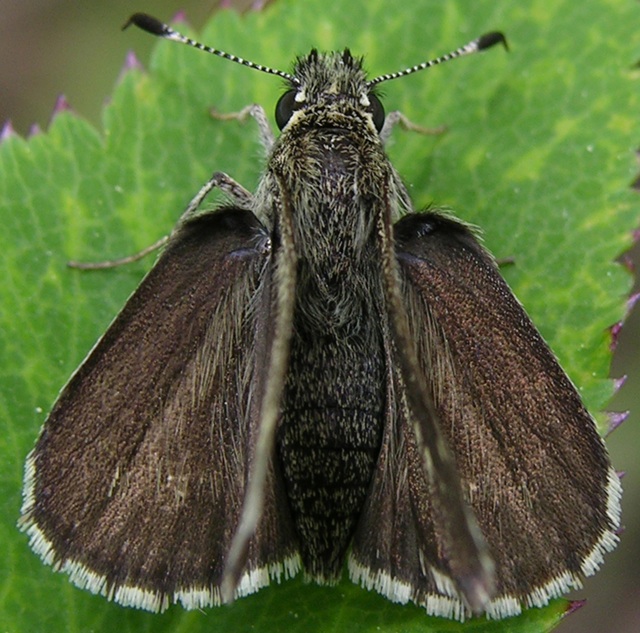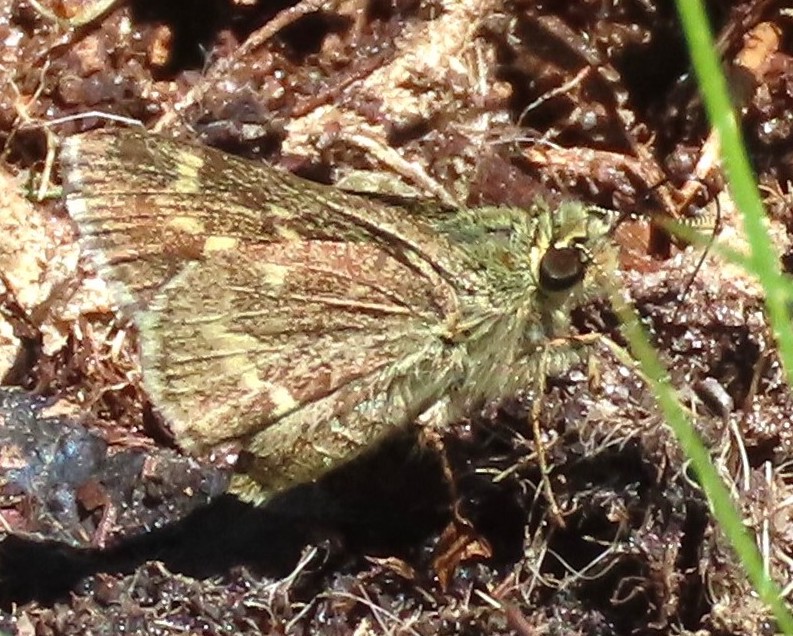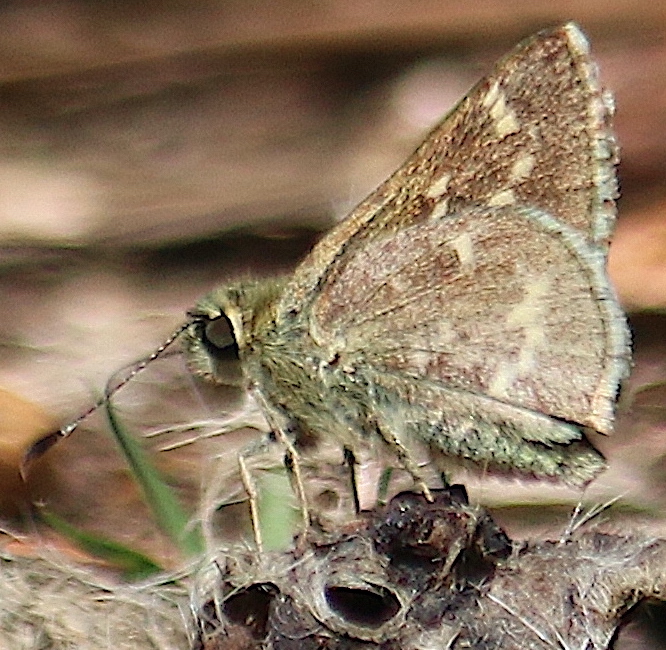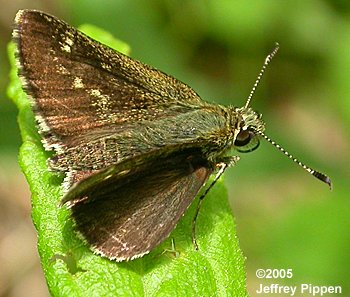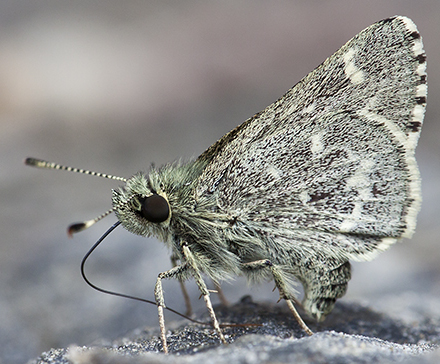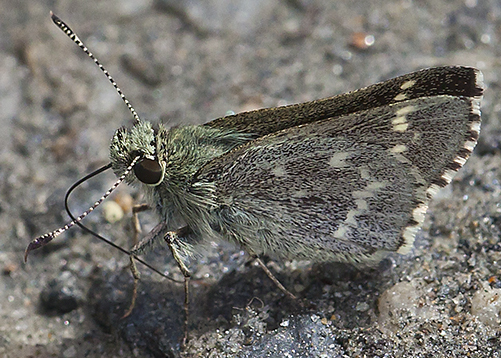|
| Common Name | Pepper and Salt Skipper by Roger Rittmaster => Buncombe Co.
[View PDF]
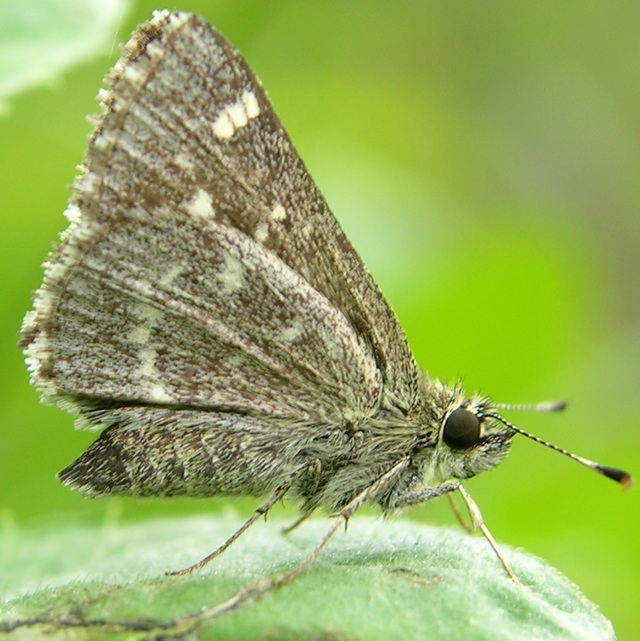 Click to enlarge Click to enlarge
[Google Images] GBIF [Global Distribution ] BoA [Images ] iNaturalist |
| Scientific Name | Amblyscirtes hegon
|
| Link to BAMONA species account. |
| Map | Click on a county for list of all database records for the species in that county.
 |
| Distribution | DISTRIBUTION: Occurs throughout the Mountains and presumably most or all of the Piedmont, but few records for the central and southeastern portions of the Piedmont. Thus, the currently known range is mainly the Mountains, Piedmont foothills, and the northeastern Piedmont, but it should be assumed to be present throughout these two provinces. The range extends eastward to Halifax, Wake, and Richmond counties.
|
| Abundance | ABUNDANCE: Uncommon (but easily overlooked) in the Mountains and adjacent Piedmont foothills; rare to very uncommon in the northeastern Piedmont, but rare (presumably) in most of the Piedmont. Whether it is actually more numerous in the northeastern Piedmont than in the central or western parts of the province is uncertain and may be an artifact of field work. Absent (so far as known) from the Coastal Plain.
|
| Flight | FLIGHT PERIOD: Most butterfly experts in the East insist that the species has just a single brood, extended in time more so than the other species in the genus. [Note that all other Eastern Amblyscirtes species have multiple broods, often three broods!] However, the NC flight data suggest more than a single brood -- mainly early or mid-April to late May (Piedmont) and to early June (Mountains); the second brood, if there is one, occurs from mid-June to early or mid-July in the Mountains. The mysteriously tiny "second brood" in the Piedmont occurs only from mid-June to late July, but much more data are needed.
|
| Habitat | HABITAT: This is one of the few skippers found inside rich or moist hardwood forests. Of course, it is not found in the deep shade, but it occurs along sunny trails or roads through such rich areas. Favored habitats are trails or logging roads through coves, or dirt roads through other moist hardwood forests or along creeks. In 1994, I also saw them along a trail in an upland forest and even along the margin of a thicket!
|
|
| | Plants | FOOD AND NECTAR PLANTS: The foodplants are various native grasses, presumably those adapted to growing in shade or partial shade of moist forests. The species nectars infrequently; it usually is seen perched on moist dirt of trails and dirt roads, or perched on leaves on the ground.
|
| Comments | COMMENTS: This tiny skipper is always a thrill to spot. It is a tame species, which will allow an observer to "belly up" to it to see it well as it perches on the ground. It has a unique ground color on the under wings, a somewhat olive-gray-buff color with a peppered look that is easily recognized in the field, regardless of the pattern of buffy spots and patches. It is typically the first grass skipper flying in the Mountains in spring.
I assume the near absence of records for the ccentral Piedmont is an artifact of field work. Certainly, spring and summer field work has been conducted in the region, so it obviously is not numerous. But, plenty of habitat appears to be present at places such as the Brushy Mountains, Pilot Mountain State Park, and heavily wooded sites along the Yadkin River.
In late 2023, a paper published in The Taxonomic Report by Pavulaan, Patterson, and Grishin has split this species into four species, based essentially on genitalic and genomic differences of the complex. Based on the range map of the few specimens analyzed, two species -- hegon and nemoris -- are in NC thus far, based on just three specimens from the state, all in the southern mountains. A third species -- matheri -- has a buffy-brown ventral hind wing color, and as a few NC photos do show such a color instead of the much more frequent grayish-buffy color, this more southerly taxon might also be present in the state. Until more data are published on life history, habitats, foodplants, and other factors besides just genitalic and genomic ones, this website will refrain from writing any new species accounts, especially as we have very little idea to which taxa our sightings and photos belong. Note that common names of these species are not proposed in the paper.
|
State Rank | S4 | | State Status | |
Global Rank | G5 | | Federal Status | |
| Synonym |
|
| Other Name |
|
|
|

 >>
>>